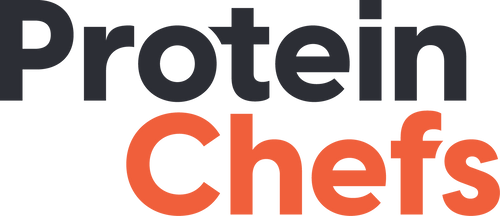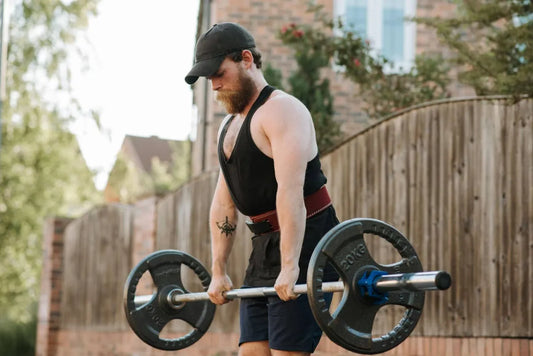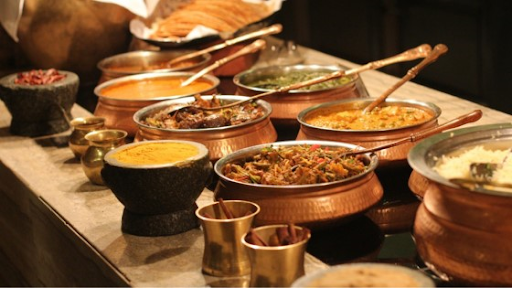With health, wellness, and fitness on top of everyone’s minds, it’s no wonder that there are thousands of exercise routines and eating plans to help you achieve your goals—whether that’s losing a couple of pounds, getting that six-pack, improving fitness performance, or simply leading a healthier life.
And while the different plans out there advocate different approaches to healthy eating, there’s one thing they all have in common: knowing what goes into your body is essential if you want to achieve long-term health, weight loss, and fitness goals.
Yes, diet matters as much as exercise if you want to achieve those athletic, aesthetic, and health goals.
One of those proposals to achieve health, strength, and longevity is the CrossFit diet accompanied by an exercise plan. While it’s not a secret that CrossFitters are serious about their sport, some might not be aware of the intensity of their lifestyle. Like all forms of exercise, this one has its own rules and recommendations for what to eat when working out.
What benefits does the CrossFit diet have? Is it right for you? How can you adapt it to your busy lifestyle? Read on to find out.
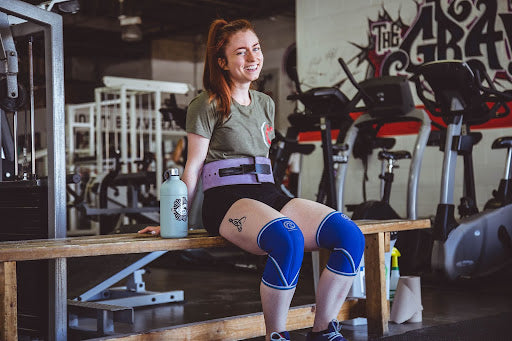
Photo by: Alora Griffiths via Unsplash
Who is CrossFit nutrition for?
- Athletes who want to enhance their performance at the gym
- People who are trying to lose weight
- Fit individuals looking to reduce their body fat percentage
- Gym rats and newbies who are trying to gain muscle
- People who need help regulating their blood sugar
What is the CrossFit diet plan?
Based on the Zone Diet, the CrossFit meal plan advocates for an eating plan focused on meat, vegetables, nuts and seeds, certain fruits, healthy fats, and little to no starch. It also recommends eliminating sugar, processed foods, and fast-food and high-calorie/carb foods such as bread, tortillas, and pasta.
Like its predecessors, the Zone and Paleo diets, the CrossFit nutrition plan focuses on eating a balanced carbohydrate, protein, and fat that helps you build muscle, lose weight and improve your athletic performance. The diet has also been shown to control blood sugar, minimise inflammation, and curb hunger.
This style of food plan has also been shown to reduce inflammation, which may speed up recovery from workouts, allowing you to train correctly and improve over time.
The combination of constantly varied functional movements executed at high intensity, such as CrossFit, and a meal plan based on whole, unprocessed foods, such as the CrossFit diet, can transform your body, health, and ultimately, your life.
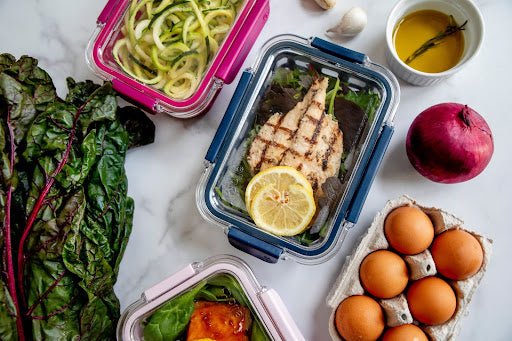
Guidelines to effectively follow the CrossFit meal plan
The CrossFit nutrition guidelines recommend eating a macronutrient ratio of 40% carbohydrates, 30% protein, and 30% fat. The key is to focus on whole foods, fresh fruits and vegetables, and lean proteins and fats. And as mentioned, avoiding processed foods and high-glycemic carbohydrates is key.
Some proponents of the diet recommend the block method to simplify the eating plan. These blocks help to measure protein, carb, and fat intake and to ensure you’re getting all the nutrients you need for optimum performance.
Here’s how to divide and combine each block:
- 1 protein block = 7 grams of protein
- 1 carbohydrate block = 9 grams of carbs (excluding fibre)
- 1 fat block = 1.5 grams of fat
Depending on your sex, weight, fitness level, and health goals is how you determine how many of each of the blocks you’ll need for each meal and for each day. On average, women need 11 blocks of each macronutrient daily. Men need 14.
An average woman might divide her 11 blocks like this:
- Protein: 3 blocks at breakfast, lunch & dinner
- Carbs: 3 blocks at breakfast, lunch & dinner
- Fats: 3 blocks at breakfast, lunch & dinner
The remaining blocks would be spread out in snacks, calculating 2 snack times with 1 block of each macronutrient for a total of 33 blocks daily.

Photo by Jason Briscoe via Unsplash
What to Eat on a CrossFit Diet
Focus on eating protein, healthy monounsaturated fats, some low-glycemic fruits, and plenty of non-starchy vegetables.
- For proteins, some examples include: grass-fed beef, chicken breast, cod, cottage cheese, salmon, and tofu
- For vegetables, include asparagus, bell peppers, broccoli, green beans, romaine lettuce, and tomato.
- Fruits may include apples, blueberries, grapefruit, orange, pear, and strawberries.
- Fats include almonds (in moderation), almond butter, avocado, guacamole, olive oil, and vinegar dressing.
You may also want to include an omega-3 supplement to help reduce inflammation.
What Not to Eat on a CrossFit Meal Plan
For best results, it is best to restrict or avoid certain types of food, such as:
- Fruits high in sugar, such as bananas, dates, figs, and mangoes.
- Avoid drinking sugar in the form of juice, especially if they come from a box or bottle.
- Anything with refined white flour, including bread, cereal, baked goods, pasta, and tortillas.
- Limit or reduce vegetables with a high starch, such as corn, potatoes, and sweet potatoes
- Avoid, limit or reduce legumes such as beans, chickpeas, and lentils.
- Sweets, desserts, sugar-sweetened drinks like soda, and processed, fast food.

Photo by Toa Heftiba via Unsplash
Example Day on the CrossFit Diet Plan
You’ll want to plan your meals and snacks to stay full and satisfied throughout the day. This is especially important on days when you’re doing high-intensity CrossFit workouts, which can leave you feeling drained by mid-afternoon.
Here’s an example of one day’s worth of meals on the CrossFit diet for an average woman:
Breakfast (3 food blocks): Omelette with veggies and turkey bacon, and a piece of fruit
2 eggs
1 cup (156 grams) of mushrooms
3 1/2 cups (630 grams) of spinach
3 strips of turkey bacon
1 teaspoon (5 ml) olive oil
1/2 apple
Lunch (3 food blocks): Large salad with grilled chicken and a piece of fruit for dessert.
2 ounces (57 grams) of grilled chicken
Up to 2 heads of iceberg lettuce
1 cup (70 grams) raw mushrooms, diced
1 cup (104 grams) raw cucumber, diced
1 sliced red pepper
1 hard-boiled egg
2 tablespoons avocado
1 teaspoon (5 ml) vinegar dressing
1 small fruit, like a plum
Mid-Afternoon Snack (1 food block): Boiled egg, nuts, and fruit.
1 hard-boiled egg
6 peanuts
1/2 apple
Dinner (3 food blocks): Veggie bowl with grilled salmon
4 oz (113 grams) salmon, grilled
2/3 cup (67 grams) of veggies, cooked
Up to 1 head of iceberg lettuce
1/4 cup (37 grams) raw tomato, sliced
1 cup (104 grams) raw cucumber, sliced
2 tablespoons avocado
1/3 teaspoon (3.3 ml) olive oil
Pre-Bedtime Snack (1 food block): Cottage cheese, nuts, and fruit.
1/4 cup (56 grams) cottage cheese
1 cup of blueberries
3 almonds
Benefits of the CrossFit Nutrition Approach
The CrossFit diet is designed to help you lose weight and build muscle. It’s also designed to support your overall health, so you can live the life of fitness that you want!
Here are some of the benefits of following the CrossFit diet:
- Helps you lose weight and gain muscle
- Improves athletic performance
- Improves overall health
- Helps with body composition (fat vs. muscle)
Helps regulate sugar levels in the blood, preventing diabetes and other diseases associated with high blood sugar levels like heart disease and cancer.

Things to keep in mind
The CrossFit diet proposes a moderate to low carbohydrate intake, which may not be enough for the energy that CrossFit demands from its athletes. Research remains scarce on the subject, especially the long-term effects of this approach.
The eating plan may not be suitable for people with health conditions requiring them to watch their protein intake as the diet’s primary food group is protein.
And finally, the diet plan suggests a limit on the number of saturated fats intake, including many dairy products. Again, there is not enough information on the long-term effects of limiting healthy fats.
Is the CrossFit Diet right for me?
Contrary to its name, the diet is not exclusive to CrossFit athletes. Anybody interested in reaching a healthy weight, building some muscle, having more energy, or simply leading a healthier life could benefit from trying the CrossFit diet.
The CrossFit diet allows you to fuel your body with nutrient-dense foods while optimising some of your favourite foods and the benefits are outstanding.
That being said, it can be a little complicated or overwhelming to follow a new eating plan. It’s easy to get overwhelmed with the percentage blocks, run into a wall when it comes to meal planning, or fall back into bad habits when times are tough.
That’s why Protein Chefs is the best ally when starting the CrossFit diet.
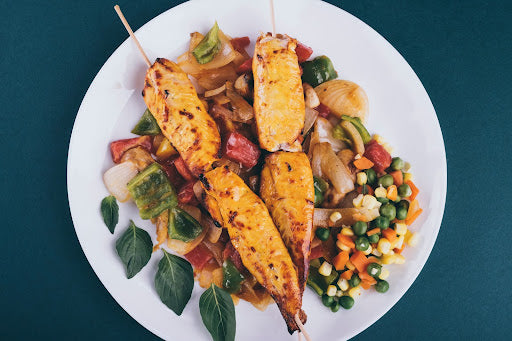
How can Protein Chef help you follow a CrossFit diet
Created for the busy Canadian, Protein Chefs is the premium meal-prep option for people who want to eat well but don’t have the time or energy to do it.
Eating a balanced CrossFit diet is as easy as 1-2-3 with our meal plans.
- Choose from our menu options or the diet plan you’re following
- Add to your cart
- Get fresh meals delivered right to your doorstep to just warm up.
There will be no second-guessing if you can eat something, no wondering if you’re measuring everything correctly, and no getting bored with the same foods and flavours. Sticking to a healthy diet will also help you create balanced eating habits. Our rotating menu changes twice weekly, allowing you to enjoy various delicious meals while staying on top of your diet and healthy meal plan.
Our innovative approach to food delivery means your meals are kept fresh with vacuum-sealed packing that boosts shelf life for up to 6 days and seals in flavour. We use only high-quality ingredients like 100% grass-fed beef, antibiotic and hormone-free meats, sustainably caught wild seafood, and certified Halal – all prepared by a Chef de Cuisine certified Chef.
Our team works with Chef Chris De Giusti to create exquisite meal plans aligned with your health goals. The Italian Canadian chef brings over ten years of culinary experience in fine dining and large banquets at some of Toronto’s finest hotels and private clubs.
Whatever your health, weight loss, or fitness goals, having a set meal plan with delicious food delivered straight to your door prepares you for success.
CrossFit Diet | Printable PDF
The CrossFit nutrition guidelines recommend eating a macronutrient ratio of:
- 40% carbohydrates
- 30% protein
- 30% fat
To simplify the eating plan, apply the block method:
- 1 protein block = 7 grams of protein
- 1 carbohydrate block = 9 grams of carbs (excluding fibre)
- 1 fat block = 1.5 grams of fat
Depending on your sex, weight, fitness level, and health goals is how you determine how many of each of the blocks you’ll need for each meal and for each day.
On average, women need 11 blocks of each macronutrient daily. Men need 14.
Here’s an example of one day’s worth of meals on the CrossFit diet with 11 blocks:
Breakfast (3 food blocks): Omelette with veggies and turkey bacon, and a piece of fruit
2 eggs
1 cup (156 grams) of mushrooms
3 1/2 cups (630 grams) of spinach
3 strips of turkey bacon
1 teaspoon (5 ml) olive oil
1/2 apple
Lunch (3 food blocks): Large salad with grilled chicken and a piece of fruit for dessert.
2 ounces (57 grams) of grilled chicken
Up to 2 heads of iceberg lettuce
1 cup (70 grams) raw mushrooms, diced
1 cup (104 grams) raw cucumber, diced
1 sliced red pepper
1 hard-boiled egg
2 tablespoons avocado
1 teaspoon (5 ml) vinegar dressing
1 small fruit, like a plum
Mid-Afternoon Snack (1 food block): Boiled egg, nuts, and fruit.
1 hard-boiled egg
6 peanuts
1/2 apple
Dinner (3 food blocks): Veggie bowl with grilled salmon
4 oz (113 grams) salmon, grilled
2/3 cup (67 grams) of veggies, cooked
Up to 1 head of iceberg lettuce
1/4 cup (37 grams) raw tomato, sliced
1 cup (104 grams) raw cucumber, sliced
2 tablespoons avocado
1/3 teaspoon (3.3 ml) olive oil
Pre-Bedtime Snack (1 food block): Cottage cheese, nuts, and fruit.
1/4 cup (56 grams) cottage cheese
1 cup of blueberries
3 almonds
